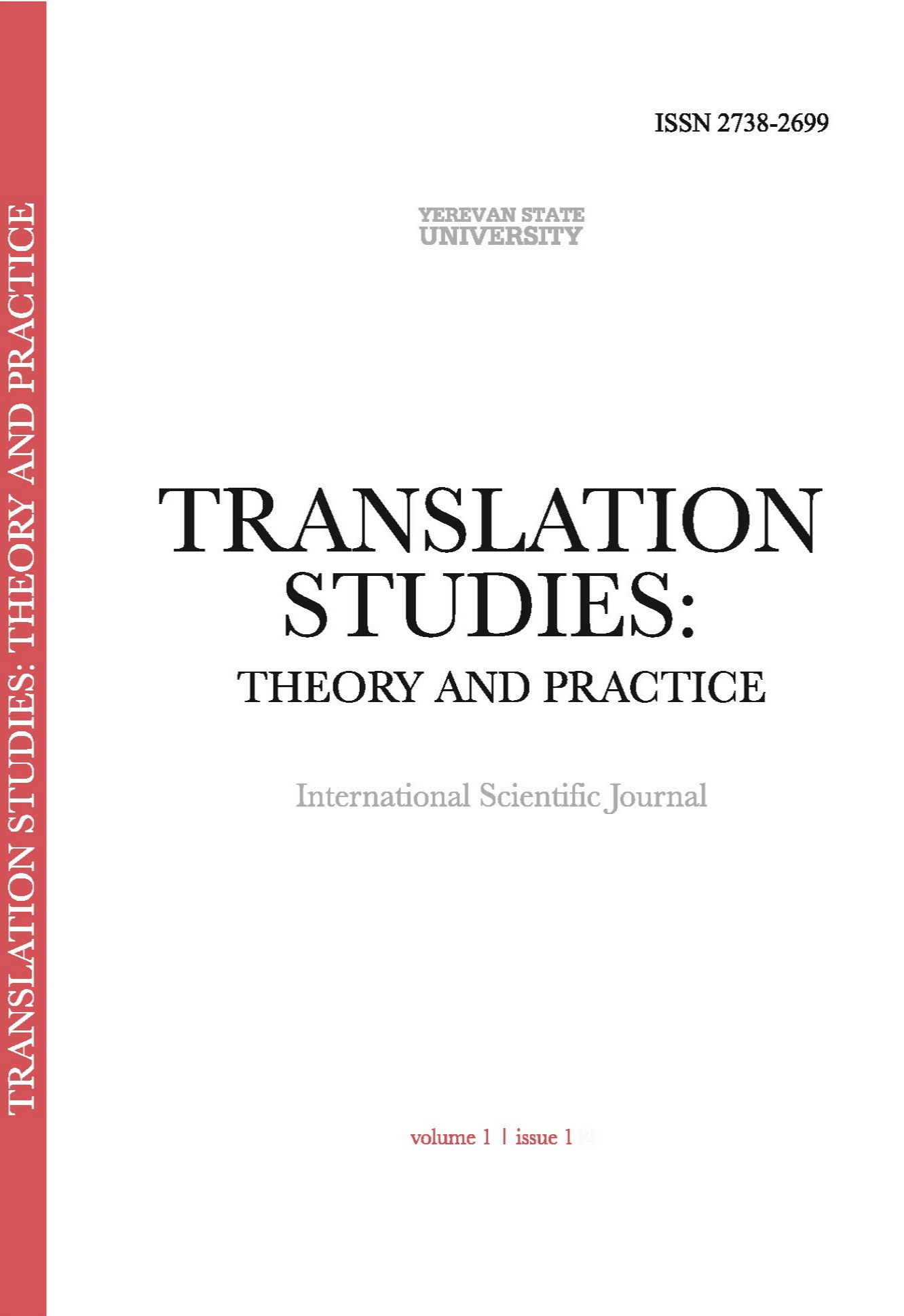Locales and Interlanguage Communication
DOI:
https://doi.org/10.46991/TSTP/2021.1.1.36Keywords:
locale, translation, interlanguage communication, content distributionAbstract
Traditional approaches fail to grasp the essential drivers and turns of interlingual communication in a wide context of current technological, marketing and economic processes. New scenarios of cross- and interlanguage information distribution, prevalence of functionality, timeliness, relevance, predictability, relevance and marketing function of selling texts over standards of quality, do not comply with any types of equivalence and adequacy. The concept of ‘locale’ is used in a variety of research, including Translation and Localization Studies, Marketing, Sociology, Political Science, etc., and allows to identify new variables, qualities and functions of interlanguage communication, embedded into technologically and economically driven processes of content and products distribution. Such parameters of locales as purchasing power, size, stronger or weaker communicative potential of languages, etc., account for asymmetries in interlingual communication and provide for the conceptualization of new patterns of content production and consumption across languages.
References
Adams, Nicole Y. 2013. Diversification in the Language Industry: Success Beyond Translation. NYA Communications.
Bateman, John A., Christian M.I.M. Matthiessen and Licheng Zeng. 1999. “Multilingual Natural Language Generation for Multilingual Software: a Functional Linguistic Approach.” In Applied Artificial Intelligence, 13, no. 6: 607–639. DOI:10.1080/088395199117289.
Bernal-Merino, Miguel Á. 2015. Translation and Localisation in Video Games: Making Entertainment Software Global. New York: Routledge.
Bielsa, Esperança and Susan Bassnett. 2009. Translation in Global News. New York: Routledge.
Budin, Gerhard. 2006. “Localization.” In Encyclopedia of Language and Linguistics. 2nd ed., 290–291. Oxford: Elsevier.
Cronin, Michael. 2013. Translation in the Digital Age. London and New York: Routledge.
Cronin, Michael. 2006. Translation and Identity. New York: Routledge.
Diakopoulos, Nicholas. 2019. Automating the News: How Algorithms Are Rewriting the Media. Cambridge, MA: Harvard University Press.
Esselink, Bert. 2000. Practical Guide to Localization. Amsterdam, Philadelphia: John Benjamins.
Fairman, Gabriel. Oct 17, 2019. “What Is Transcreation? And Is It Better Than Translation?.” In The Bureau Works. [Blog]: https://resources.bureauworks.com/what-is-transcreation-and-is-it-better-than-translation-fc (Accessed May 27, 2020).
Giddens, Anthony. 1981. A Contemporary Critique of Historical Materialism: Volume 1, Power, Property and the State. Berkeley, CA: University of California Press.
Haberstroh, Bethany. October 14, 2015. “Content Localization: What It Means & Why You Need It.” In Ennveritasgroup [blog]: https://enveritasgroup.com/campfire/content-localization-what-it-means-why-you-need-it/ (Accessed May 27, 2020).
Jiménez-Crespo, Miguel A. 2013. Translation and Web Localization. London: Routledge.
Lewis, Seth C and Oscar Westlund. 2015. “Actors, Actants, Audiences, and Activities in CrossMedia.” In News Work. Digital Journalism, 3, no 1, 19–37.
McDonough Dolmaya, Julie. 2018. “The Politics of Localization.” In Routledge Handbook of Translation and Politics. (eds.) Evans Jonathan and Fruela Fernández, 343–357. London: Routledge.
Meer, Jaap van der. 2019. “Translation technology – Past, Present and Future.” In The Bloomsbury Companion to Language Industry Studies. (eds.) Erik Angelone, Maureen Ehrensberger-Dow and Gary Massey G., 285–310. London: Bloomsbury Publishing.
Meiert, Jens Oliver. 2020. The Web Development Glossary: About 2,000 Key Terms for Developers. Leanpub.
O’Hagan, Minako, David Ashworth. 2002. Translation-Mediated Communication in a Digital World. Clevedon: Multilingual Matters.
O’Hagan, Minako, Carmen Mangiron. 2013. Game Localization. Translating for the Global Digital Entertainment Industry. Amsterdam/Philadelphia: John Benjamins.
Pym, Anthony. 2004. “Propositions on Cross-Cultural Communication and Translation.” In Target. 16 no. 1: 1–28. DOI:10.1075/target.16.1.02pym.
Pym, Anthony. 2004b. The Moving Text – Localization Translation, and Distribution. Amsterdam, Philadelphia P.A.: John Benjamins.
Schäffner, Christina. 2012. “Rethinking Transediting.” In Meta: Journal of Translators 57, no. 4 (Winter 2012), 866–883. DOI:10.7202/1021222ar.
Schäler, Reinhard. 2009. “Localization.” In Routledge Encyclopaedia of Translation Studies. 2nd edition. (eds.) Mona Baker and Gabriela Saldanha. London, New York: Routledge: 157–161
Sandrini, Peter. 2005. “Website Localization and Translation.” In MuTra. Challenges of Multidimensional Translation: Conference Proceedings. EU-High-Level Scientific Conference Series, 131–138.
Spinzi, Cinzia. 2018. “The Wheres, Whats and Whys of Transcreation.” In Translation or Transcreation? Discourses, Texts and Visuals. (eds.) Cinzia Spinzi, Alessandra Rizzo and Marianna Lya Zummo, 1–14. Newcastle Upon Tyne: Cambridge Scholars Publishing.
Wright, Sue Ellen. 2015. “Language Codes and Language Tags.” In The Routledge Encyclopedia of Translation Technology. (ed.) Chan Sin-Wai, 536–549. Routledge.
Downloads
Published
How to Cite
Issue
Section
License
Copyright (c) 2021 Andrei Achkasov

This work is licensed under a Creative Commons Attribution-NonCommercial 4.0 International License.










